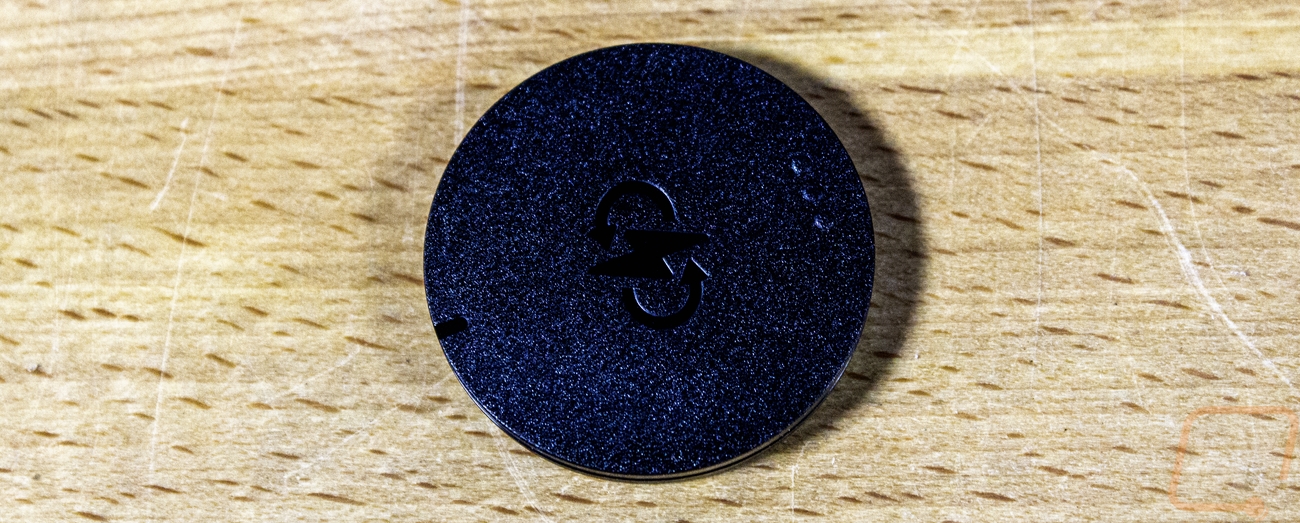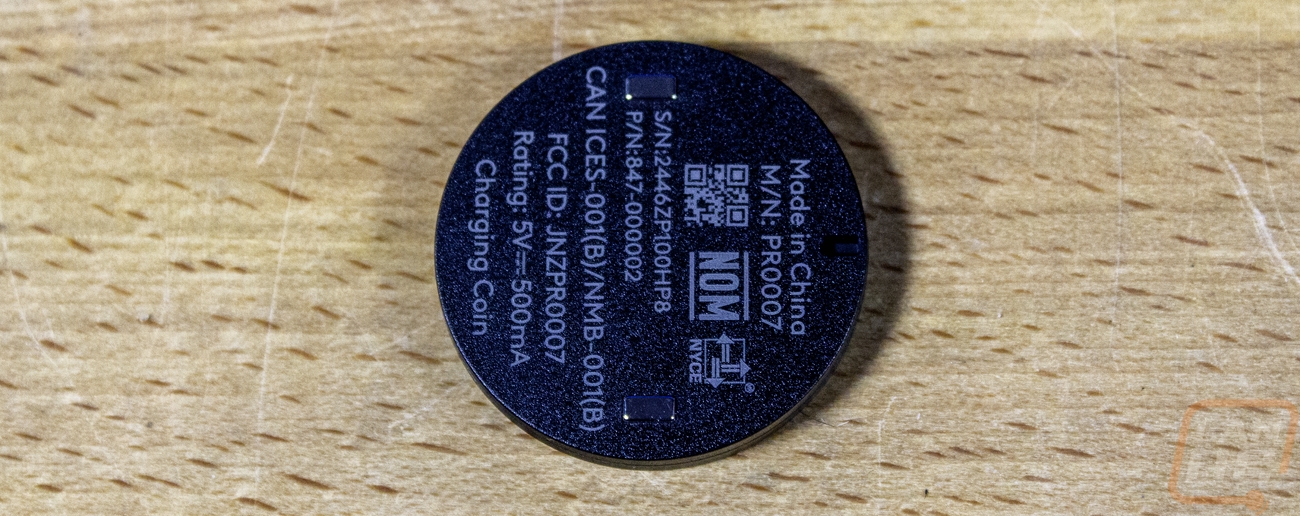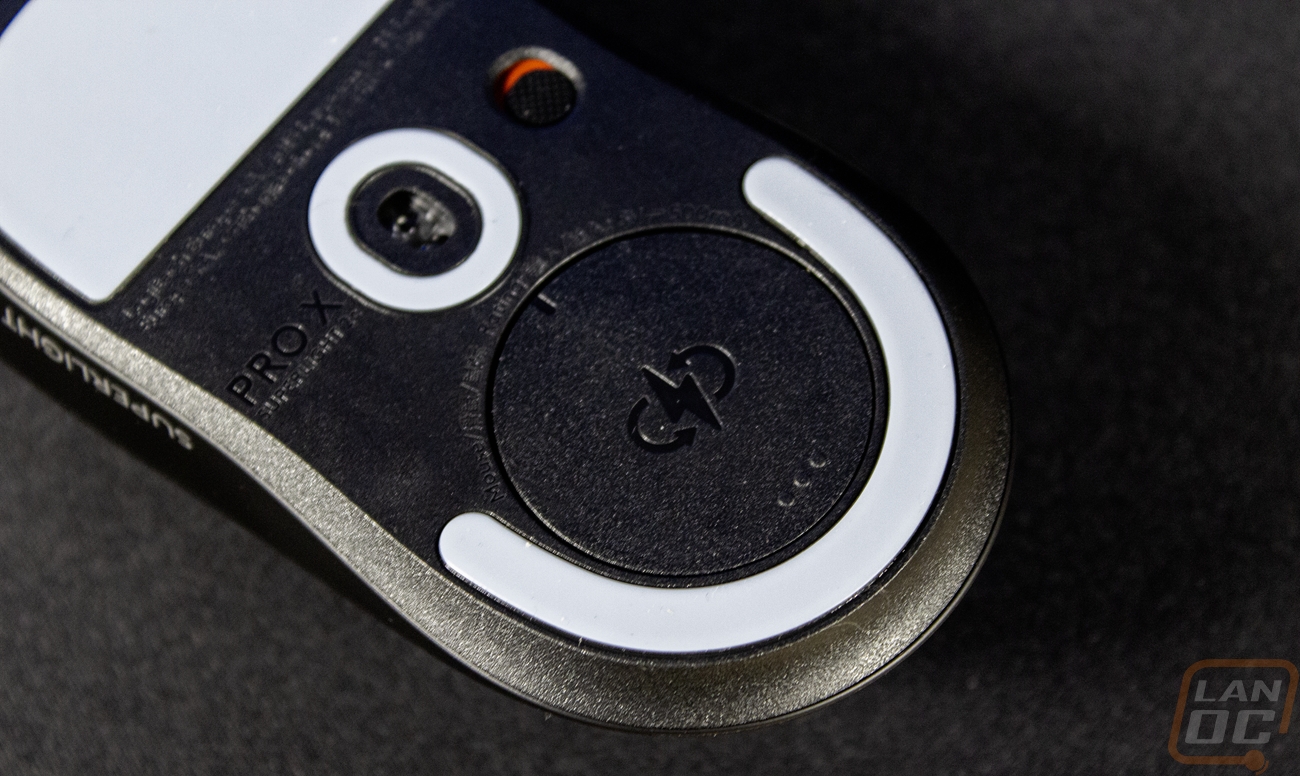Photos and Features
Before diving into the features of the Powerplay 2, I did want to touch on the packaging. The exterior of the packaging for the new design looks very similar to the original Powerplay. It has that Logitech grey background on the front and back with the Powerplay 2 branding in their signature blue with a reflective finish. The front of the box has the mouse pad on it along with a mouse to show it is charging. The original Powerplay was similar, only they added an effect to show that the mouse was charging on that one. On the back, there is a second picture of the Powerplay, this time with lines going to a few locations on it and the mouse to highlight a few features. Then, below that, they have line drawings to touch on a few other features. There is also a specification listing and a list of what you will find inside on the back as well, but the specifications (like on their website) are extremely simple showing all of the dimensions and touching on the 2-year warranty. The main change here from the original is in the construction of the box itself, which for the original was thicker, where this design uses less material, just an example of Logitech trying to be a little more sustainable which we have seen in the last 4 or 5 years.
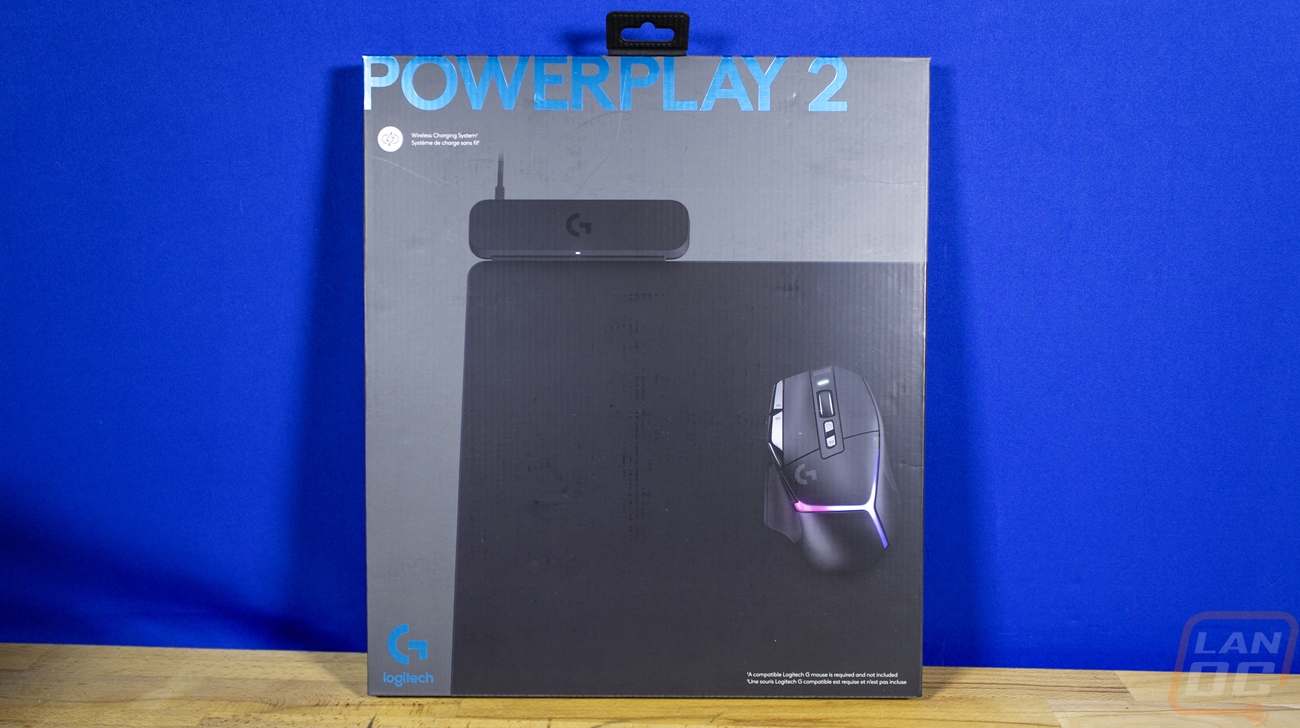
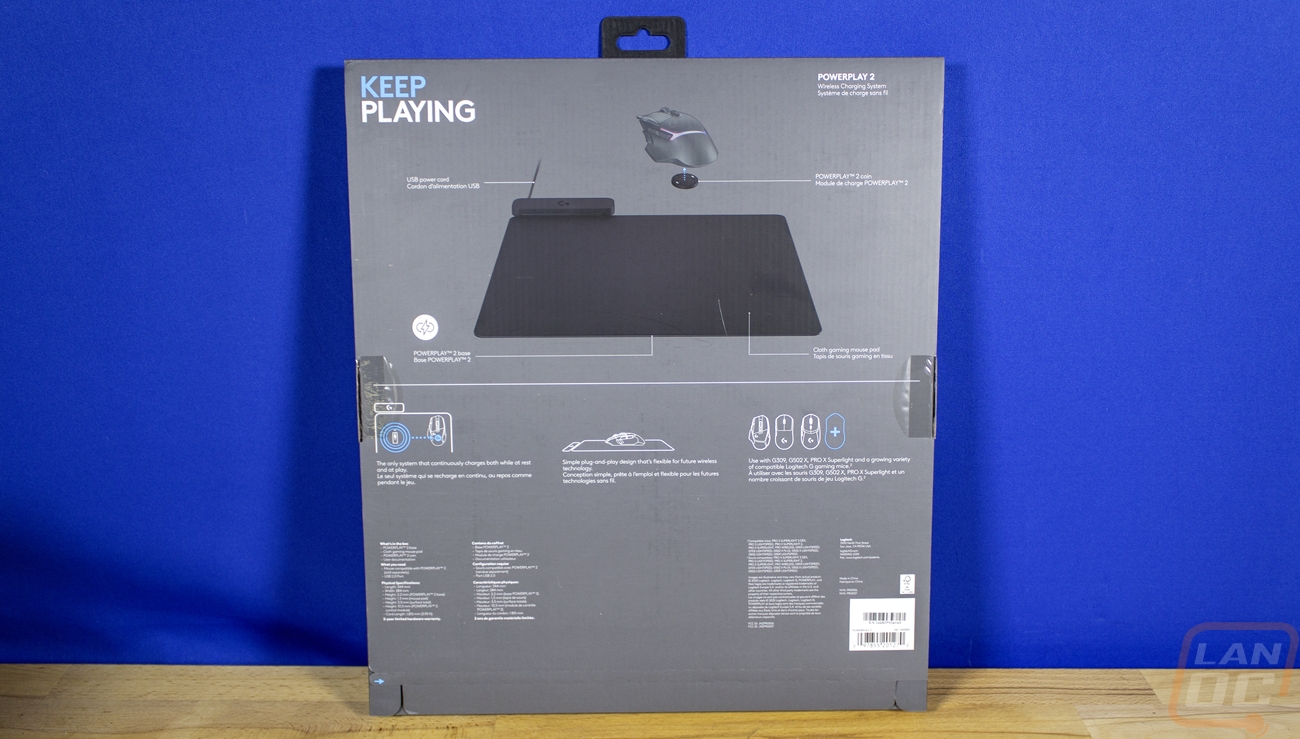
When we open the packaging up, you can see that the box is folded up to give more structure and there are a few line drawings that show how to set things up along with a QR code and link to support to get you going. Under all of that is the Powerplay 2 itself, which comes with a paper over the mousepad that says Keep Playing. Beyond the Powerplay 2 and the Powerplay coin, the only other things in the box is a paper with the warranty and safety information and a paper with information on how the Powerplay 2 is to be powered by a 5vdc 500mA minimum USB connection.
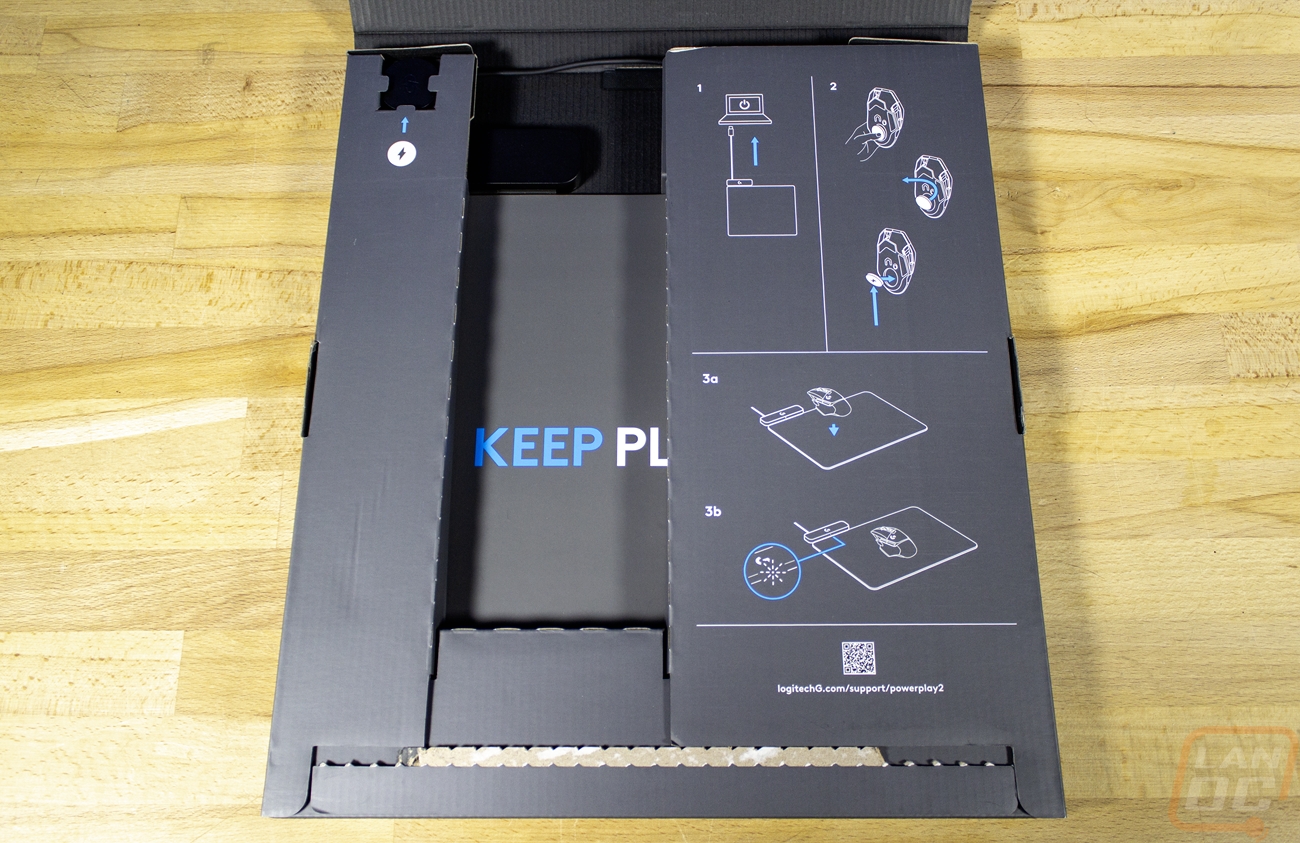
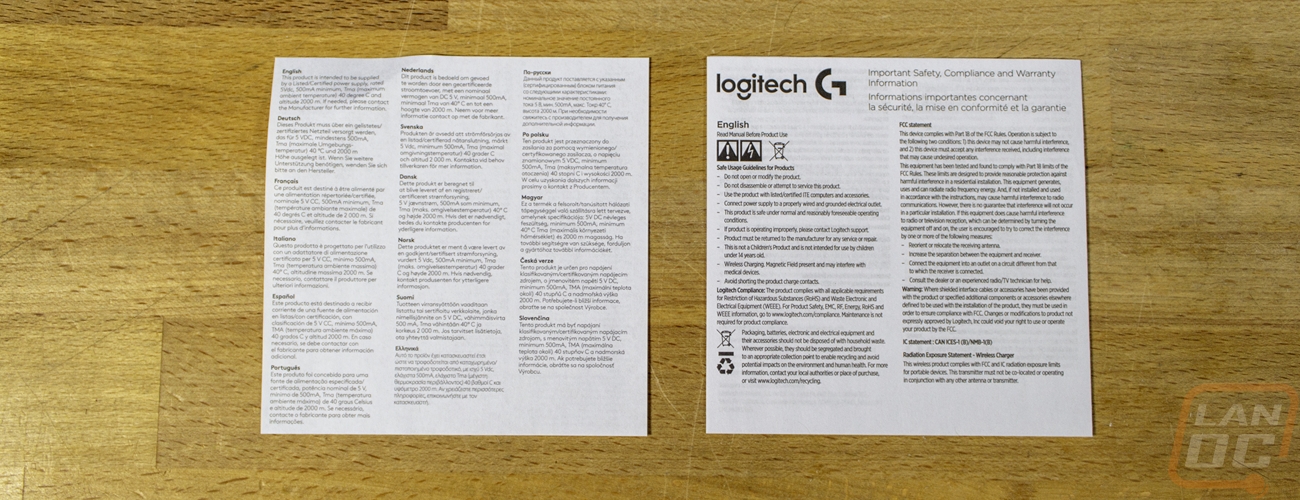
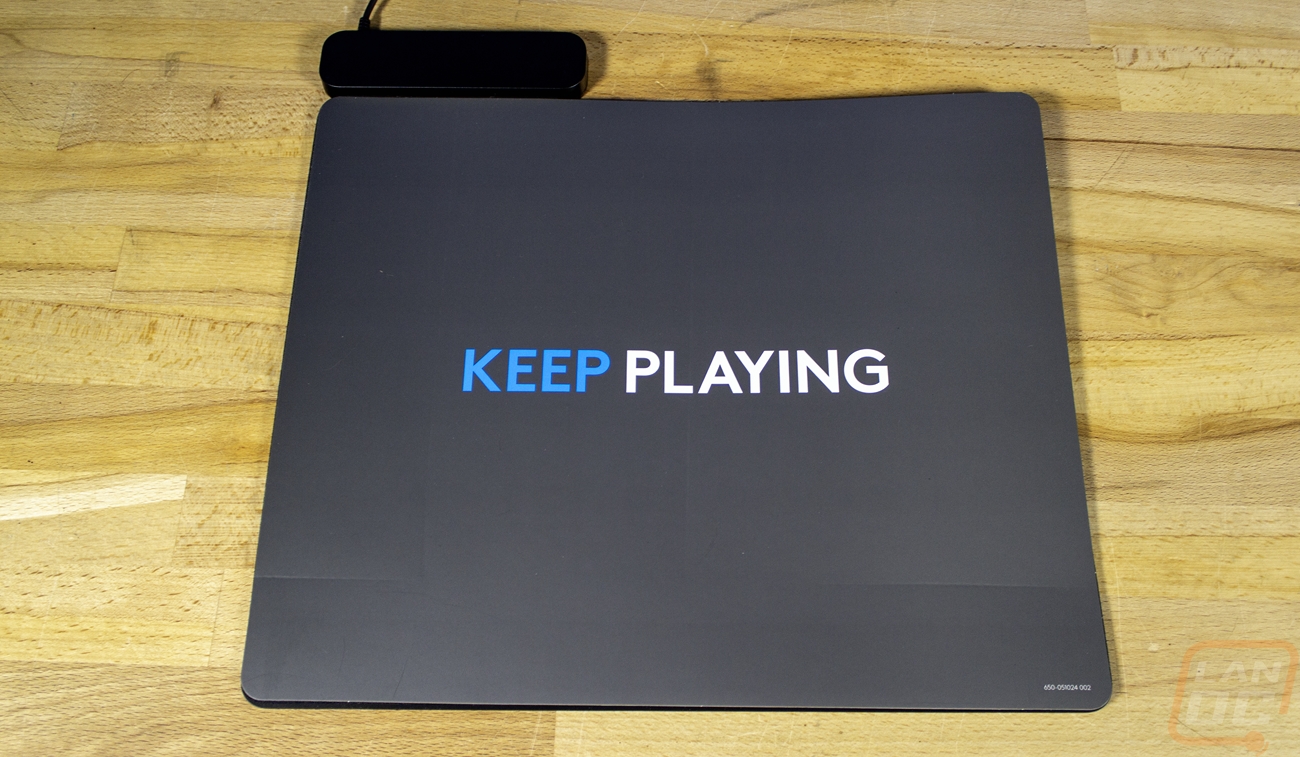
As far as the Powerplay 2 itself, there isn’t too much going on, but I did want to go through its features and most importantly a few things that I noticed that are different between it and the original Powerplay. Physically, the new design is the same size as the original at 13.54 inches long and 13.39 inches wide. The layout is the same as well, with a rubber pad under a mouse pad and then in the top left corner, they have all of the circuitry. One of my issues with the original design was the size and placement of that box, so that being in the same spot and being the same size (but a hair thinner) means I will still have those same issues. Basically, that box and the cord going to it gets in the way of my monitor's stand. This was an issue when I ran a large multi-monitor stand and a single large 42-inch display as well. But I guess I’m in the minority there. That box has changed however, with the original design the Logitech G logo was backlit in RGB and that was the status indicator. This time around they have switched to a simple white LED. That controller on the original design also doubled as a wireless adapter for your mouse and they have removed that as well. That means that now you will need to use the dongle included with your mouse, not pair it to the Powerplay. I hate to see that go, but I do understand that it will help with future compatibility. Specifically, some of the new mice now support much higher report rates and the old design wasn’t going to work with that. But I would have liked to see them put a USB passthrough right on the Powerplay 2 to plug your dongle into. That way you have the best possible wireless connection. The other big change here is the old proprietary winged micro-USB connection is gone and the USB cable is hard wired. I’m happy to see the old design go away with all of the new mice using USB Type-C, not that old design, but I would have liked to see the connection be USB Type-C at the Powerplay 2. It was always nice to be able to unplug the mouse pad and plug directly in for firmware updates or if you had wireless issues. The new cord is a little thinner and is no longer sleeved, not that it was needed in the first place. But this tracks with the cords being included with Logitech’s other products as well.
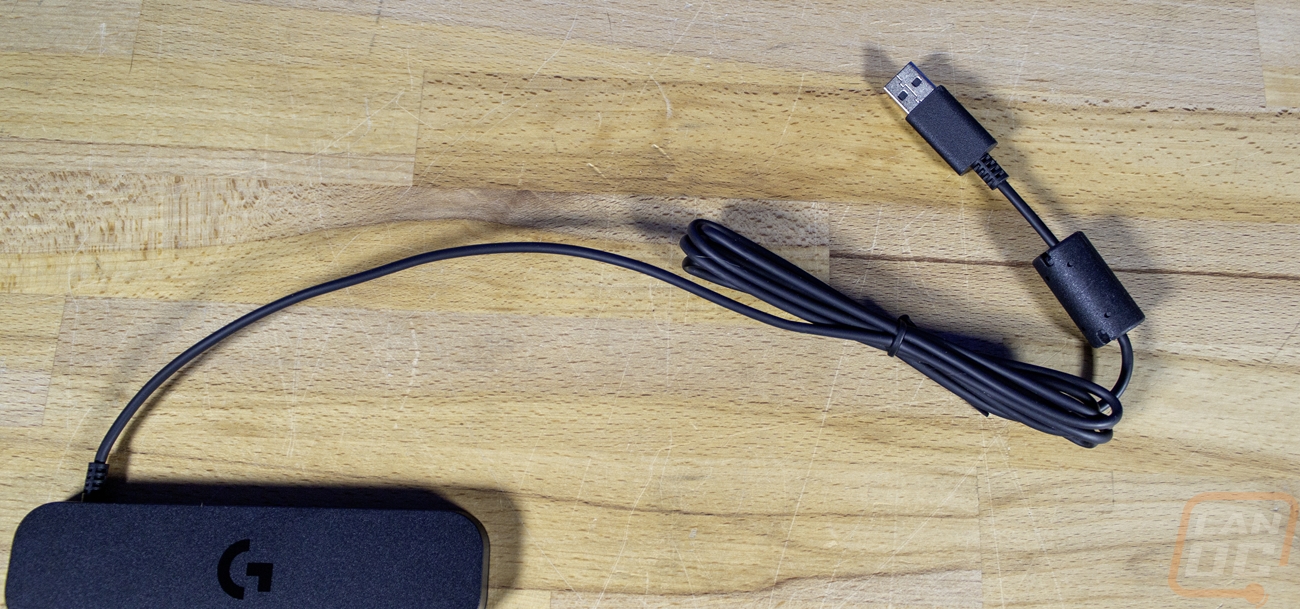

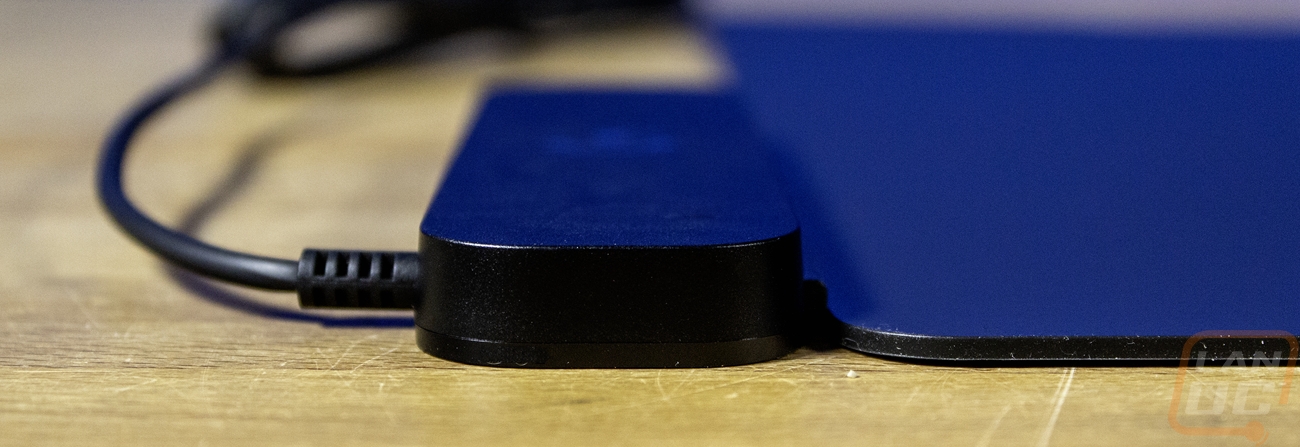

Like I mentioned before, the mouse surface for the Powerplay 2 is the same size as the original Powerplay, but that doesn’t mean that nothing changed here. My other complaint with the original was that the combination of the charging base and the mousepad on top made it thick, and on top of that the pad liked to move around on top of the charging base. This new design no longer has the extra lip around the outside edge that made it uncomfortable. Also, the pad+charger together is now a little thinner as well. The original was 4 mm thick in total, where this one is 3.5 mm thick, but interestingly, they did all that with the mouse pad itself which is now 1.3 mm thick. The charging portion is actually a hair thicker at 2.2 mm, where previously it was 2 mm and 2 mm. The new mousepad design has a static adhesive bottom to grip it to the charger. But with that, we also no longer get both a hard and soft pad, which is disappointing because I preferred the hard pad. With the Powerplay 2 being the same size, you could still use a Logitech G440, but I would have loved to see a thinner hard mouse pad option with the same static cling bottom.
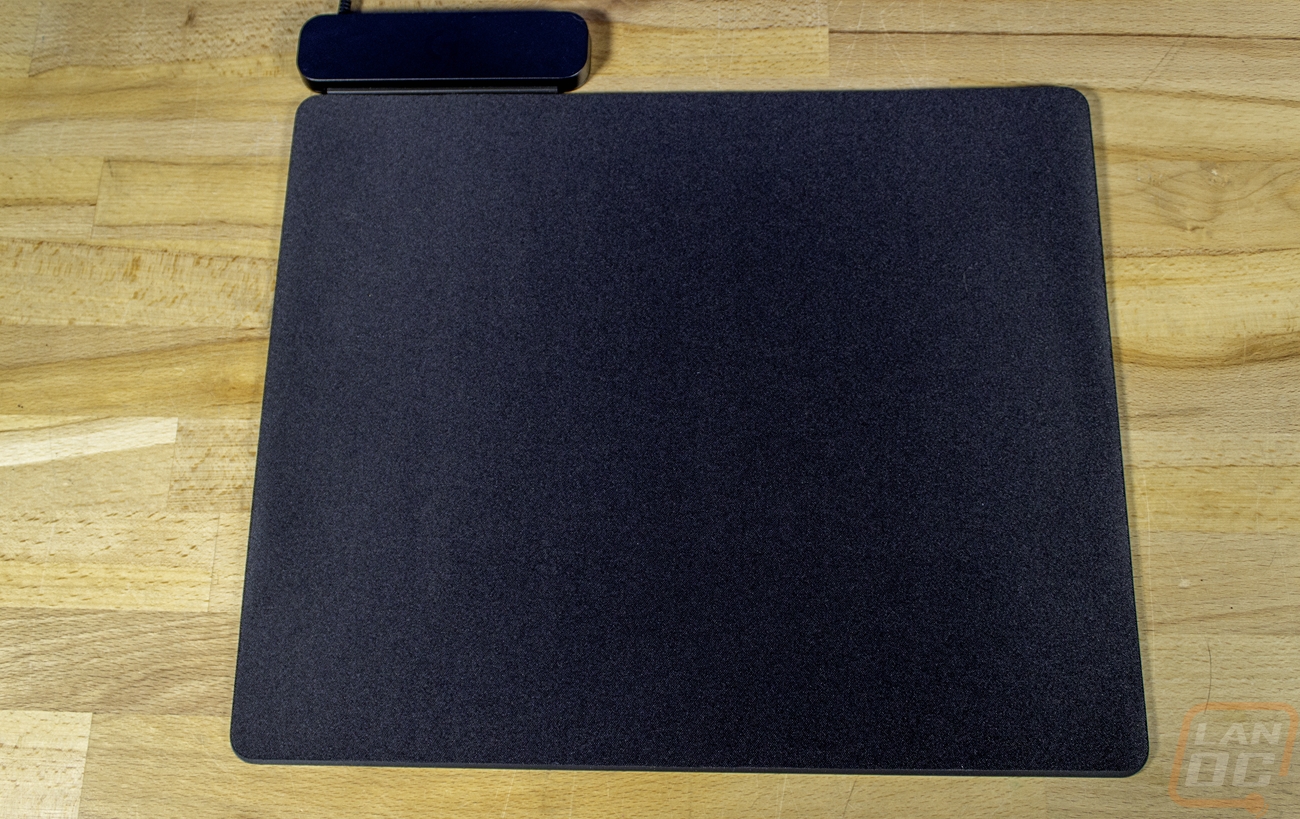
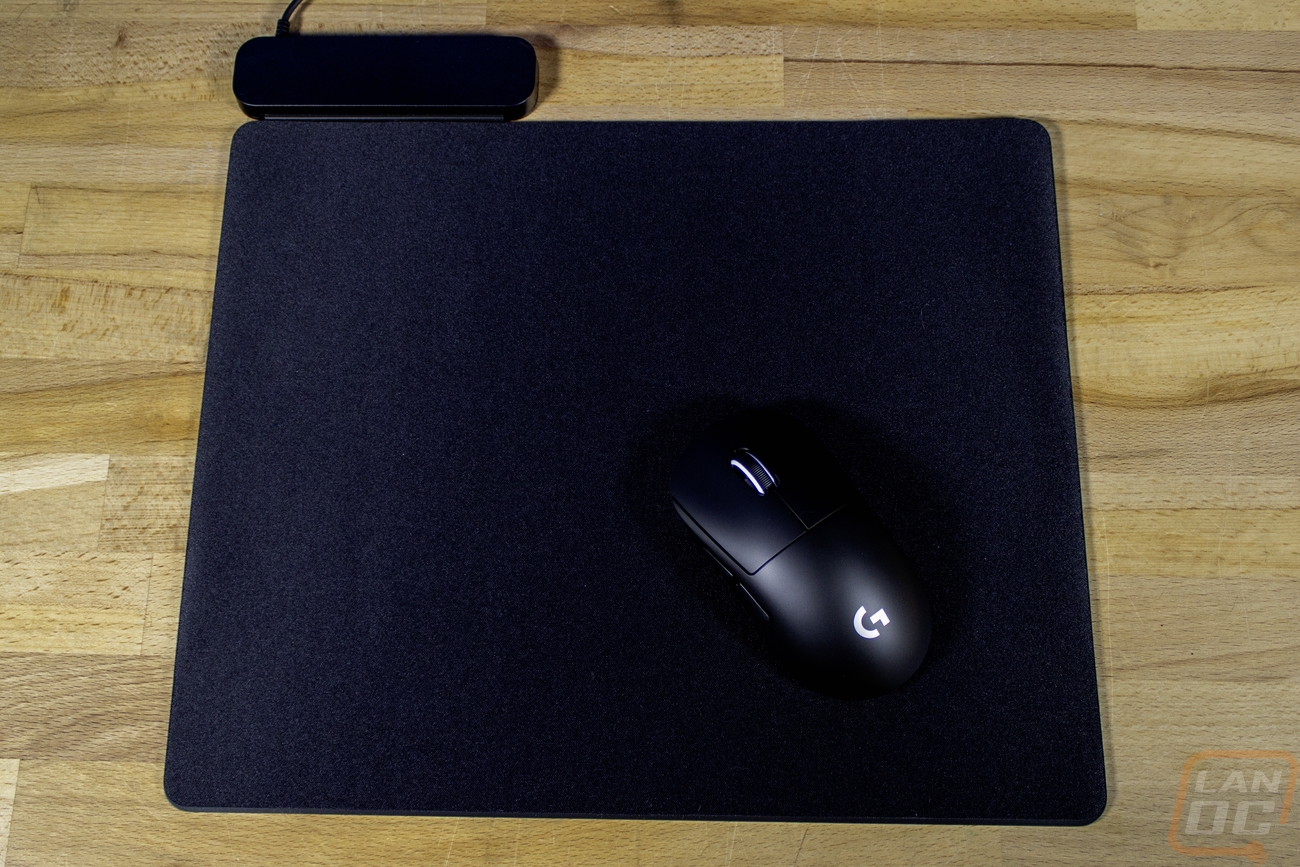
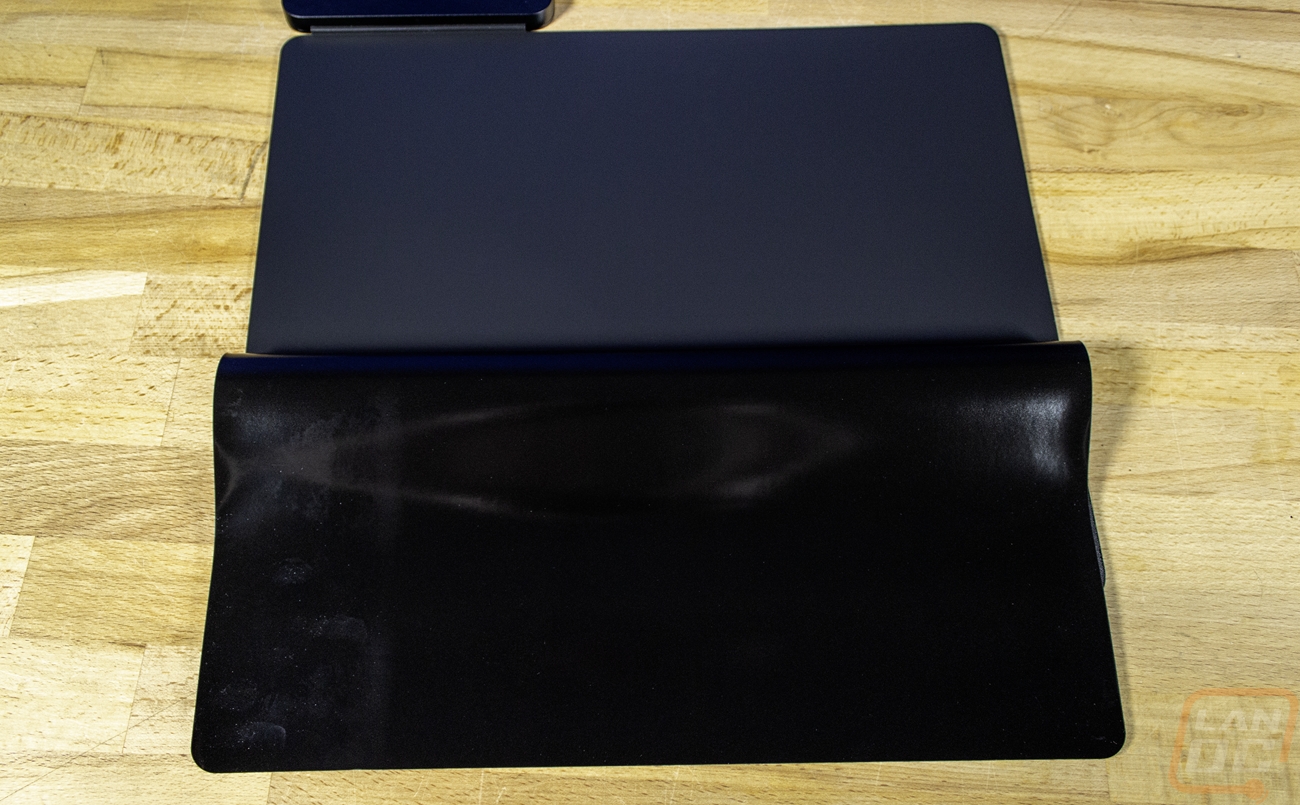
The bottom of the Powerplay 2 has the same finish that the original had across it, which is rubber to help it grip your desk. Then up in the corner, just under the block where the USB cable goes in, they have all of the normal required certification information. That includes the part number and the serial number for your specific pad. The circuitry box has the Logitech G branding on it and then the Powerplay 2 model name. While in our pictures it looks like the same finish as the rest of the bottom of the Powerplay 2, those two areas are a harder plastic and not the grippy rubber finish.


The last part of the Powerplay 2 system is, of course, the puck that comes with it to install in your Powerplay compatible mouse. Well, I call it a puck, Logitech now calls it a coin. The coin hasn’t changed at all from the original design. The coin is round and has two metal contacts that touch magnets inside the mouse and keep it in place while also passing the power into the mouse. I also included a picture of the fake coin that Logitech’s mice normally come with. The back does have all of the FCC information on it, and on the other side, the Powerplay symbol, which is the one change. The old design just had the Logitech G on it. You don’t get easier for installation. You pull out the old coin and toss this one in, and it snaps into place and you are good to go.
